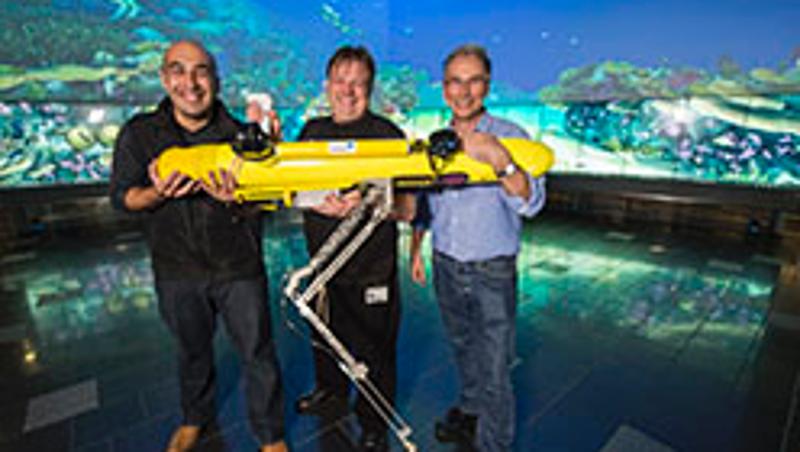
A chief investigator and a research team at the Australian Centre for Robotic Vision, hearquartered at QUT, are finalists for the 2016 Australian Museum Eureka Prizes.
Centre chief investigator Associate Professor Michael Milford is a finalist for the Eureka Prize for Outstanding Early Career Researcher. Crown-of-thorns starfish robot (COTSbot) team of Drs Matt Dunbabin and Feras Dayoub, and centre director Professor Peter Corke are finalists for the Eureka Prize for Environmental Science.
The Eureka Prizes are Australia’s most prestigious science awards, and celebrate excellence in several areas, including research and innovation.
Professor Michael Milford was named a finalist for his work in robotic vision navigation systems for robotics of all types, and for his work where he blends the two fields of neuroscience and robotics.
“I was really stoked,” said Professor Milford. “I’ve been awed by some of the past winners and what they’ve done. So it was really an honour to be nominated and to be a finalist.”
He says his passion is to understand intelligence, and robotics and neuroscience are helping him do that.
“Robotics is very tangible. If a robot is doing something clumsy or dumb, you can see it,” Professor Milford said.
“I think the things that robots do, like navigation, and helping us out with tasks, are a great way to leapfrog our way to really understanding what intelligence is, and how we can replicate it.”
For centre director Professor Peter Corke, the COTSbot project is one of the centre’s shining jewels. The COTSbot robot was designed to help target a very real threat to the Great Barrier Reef – the crown-of-thorns starfish, or COTS.
Centre associate investigator Dr Matt Dunbabin designed the robot to be a first responder system to beef up the existing program that uses divers to hunt for COTS.
Dr Feras Dayoub, a QUT Research Fellow specialising in Robotic Vision, trained the COTSbot to pick out the pest from other sea life. In other words, it can think for itself using a visual recognition system made possible by algorithms to identify COTS in the visually challenging environment of the Great Barrier Reef.
“I’m very proud to be associated with this prestigious prize,” said Dr Dayoub. “This is one example of where research can make a real difference in the world.”
Dr Dayoub says the COTSbot basically came together over the course of a year, during 2015.
“It was a rapid transformation between ideas, research, and then building this robot and testing it in the reef,” he said.
The Eureka Prizes will be announced on 31 August in Sydney.
Media Contact: Tim Macuga, Communications Officer: timothy.macuga@qut.edu.au 07 3138 6741 or 0478 571 226 or Rose Trapnell, QUT media team leader, media@qut.edu.au, 07 3138 2361 or 0417 585 901


